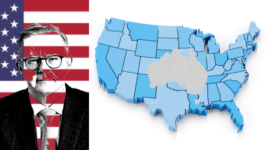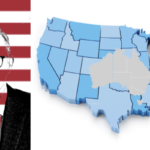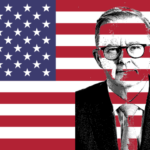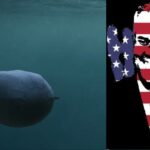Subs or No Subs, US Domination of Australia Is Absolute and so Is Its Call to War

After the fanfare of the San Diego AUKUS announcement in March, which was preceded by the star spangled unveiling of the new Australia, US and UK security pact in 2021, it only took a few more months before it became apparent that US congressional approval of the deal isn’t guaranteed.
And the questions as to whether Washington will sell some of its second-hand nuclear-powered Virginia class submarines to our country in the early 2030s are only growing, as there’s increasing speculation that the US won’t have enough of its own attack submarines on hand to share.
But regardless of whether the US sells us three to five of its domestic nuclear-powered submarines (SSNs) next decade, or even if the proposed newly designed British and Australian made AUKUS SSNs never materialise, what is assured is Canberra is set to follow Washington into any war with Beijing.
Australia’s acquisition of eight attack class SSNs, which are a clear threat to mainland China, has always been a key aspect of AUKUS, but the central purpose of the tripartite security alliance is to deal with “security challenges in the Indo Pacific”, meaning Beijing’s threat to US global hegemony.
Indeed, another crucial element of the deal is that the US and UK are to establish a permanent rotational SSN force at HMAS Stirling near Perth by 2027. And this is necessary, it’s been said, to tide our nation over in case China makes any threats in the interim before we acquire our own subs.
And one only has to reflect on the ever-increasing regional tensions and mounting militarisation since the March AUKUS announcement to realise that relying on subs that aren’t going to arrive until the two decades beginning from 2030 was never going to cover us for the fast-approaching conflict.
The pivot to the US
Regardless of whether Australia acquires any submarines early next decade, the US has successfully brokered a deal to set up its own rotational attack class submarine force in the west of Australia, which will provide the Pentagon with a frontline naval base in terms of its location to China.
The joint US-UK rotational force will increase interoperability between all three nations navies, whilst this US military submarine presence will accompany its ever-increasing air force capabilities and US marine troop numbers that began being established on this continent a decade ago.
Australia, a middle power increasingly toying with the idea of becoming a greater player, has always relied on a more powerful imperial force for protection in exchange for our support during conflicts. Up until mid-World War II that had been the UK: Australia’s former colonial ruler and chief ally.
But as Britian began to crumble during the war and abandoned its presence in Asia to protect its interests in Europe, then Labor PM John Curtin turned to the US in 1941, declaring it would become our key ally, leaving our nation “free of any pangs as to our traditional links and kinship” to the UK.
This growing dependence upon the US led to the establishment of the 1951 ANZUS treaty between the US, Australia and NZ. And while it continues to be considered the foundation of our security alliance with the US, the treaty doesn’t require Washington to assist Australia if under attack.
This lack of any requirement to step in to defend one another stands in stark contrast to the relationship the White House has with the 30-odd other nations that make up NATO, as their alliances incorporate mutual military assistance.
So, despite the common belief that the US is compelled to protect Australia, it can jump ship at any time it chooses, just as the UK did during World War II. And even without any requirement to do so, our nation has followed the US into eight foreign conflicts since the Second World War.
The pivot to Asia
But while Australia has been sending in troops to US-led conflicts in Asia and then the Middle East, our nation has begun to take on an increasingly important role in US foreign policy, since the Obama administration announced its pivot to Asia in 2011.
The Labor Gillard government of that time agreed to enter into the US force posture initiatives in 2011, while the Coalition Abbott government formally brought these arrangements into being under the 2014 Force Posture Agreement.
These initiatives involve 2,500 US marines being on permanent rotation in northern Australia, as well as providing that both nation’s air forces become increasingly interoperable, and it further provides the US with unimpeded access to dozens of agreed facilities and areas across the continent.
And when the Pentagon decides to renovate one of these agreed bases, it takes complete control of it, as is the case with RAAF base Tindall. Located near Darwin, Tindall is currently undergoing an overhaul so it can store six nuclear-capable US B-52 bombers at the facility.
And in relation to questions about the bombers last February, defence secretary Greg Moriarity explained that these military planes, or any US warships or submarines in Australia, could be carrying nuclear warheads for all we know, as Canberra respects Washington’s policy of warhead ambiguity.
Frontline for now
The last Australian prime minister to actually question the dominance Washington has over Canberra was early 1970s Labor PM Gough Whitlam, who had expressed his clear concerns about the US military installations at Pine Gap and North West Cape.
But the CIA weren’t too pleased with Whitlam’s deliberations upon the viability of these US bases on Australian soil, so, in 1975, the British Monarch’s representative in Australia, then governor general Sir John Kerr sacked our countries prime minister at the behest of the CIA.
PM Anthony Albanese, however, has certainly shown none of his predecessor’s gumption in questioning Washington. In fact, he’s enthusiastically embraced AUKUS, attended both Quad and NATO summits, and he’s even allowed the US to designate Australia as a domestic military source.
And the military developments under Albanese, which have included establishing a missile industry to provide the Pentagon with a second source of weapons, have been escalating at such a pace that questions are increasingly being asked about our nation’s status as a US vassal state.
And due to this growing US-led local war drive, former Australian Labor foreign minister Bob Carr has outlined that it’s clear Australia is sinking “into the role of US territory, as much a dependency as Guam or Puerto Rico”.
Carr also wrote this week that there are reports of a congressional paper outlining that the sale of US submarines to Australia has the potential to undermine its own fleet, along with increasing resistance to the AUKUS deal coming from US republicans and the right side of politics over here.
But regardless of whether Australia ever owns any of the submarines that have been key to AUKUS, the Pentagon is continuing to gear up for war on China as it invests a further $630 million into militarising northern Australia, which includes building the Squadron Operations facility in Darwin.
So, as it stands, Australia will acquire submarines if US congress decides it’s plausible, it will continue to see the US making increasing military inroads into its territory and it will unquestionably follow Washington into war with China, with no guarantee the US will stick around for the aftermath.







